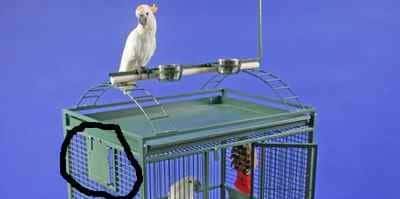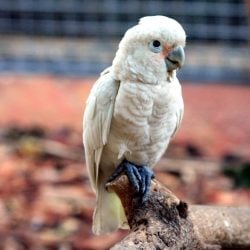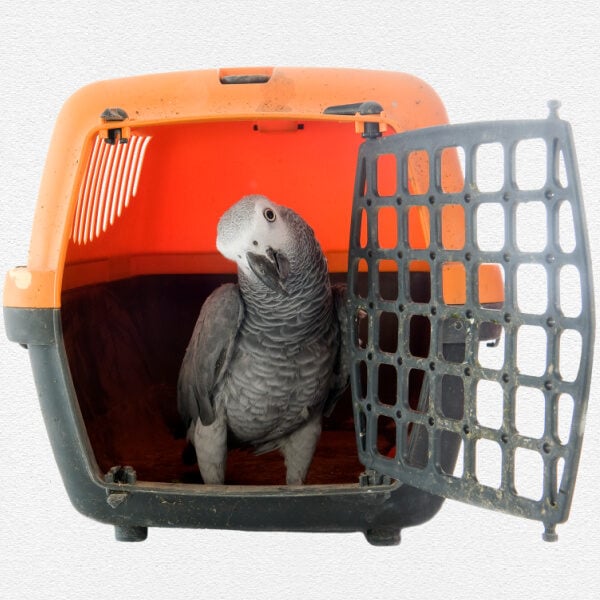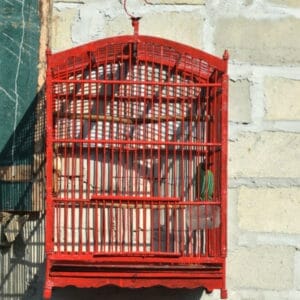
Why Bird Cages Have Breeder Doors
Last Updated on by Mitch Rezman
What’s a bird cage breeder box door?
It’s that door (with the circle around it)
you could never figure out why they would put a feeder door there
The most effective way to enable breeding is to introduce a nest box on to the bird cage Typically this is a wood box for smaller species. A metal breeder box, much like a heating duct with all six sides and a hole for and entryway, is required for larger species parrots.
Usually chicken wire of some sort is installed in the metal nest and larger wood nest boxes so the birds can climb in and out readily. Hens will naturally fill the box with bedding, lay eggs and sit on the eggs until hatched. A small nest box can be 6″ x 6″ x 6″.
Nest boxes may be hung inside the cage. A large Macaw nest box can be 30″ tall or more to accommodate the bird. A box this large would occupy too much space in the cage.
Thus nest boxes are hung outside the cage with the entry hole lining up with the nest box door. This enables the bird(s) to reside in the bird cage but have a room addition during the breeding process.
Until recently, bird owners would have to cut a square hole by sawing bars off the bird cage to hang an outside nest box. Due to improvements in manufacturing an additional door, similar to an extra feeder door can easily and economically be added higher on the bird cage to accommodate the nest box.
With the nest box door in place the bird(s) can’t escape. Remove the door, hang a nest box and you have an easy way to hang an outside nest box.
Author Profile

Latest entries
 Bird & Parrot CareJune 20, 2025Understanding the Best Way to Use Prevue Pets Mimic Me Voice Trainer
Bird & Parrot CareJune 20, 2025Understanding the Best Way to Use Prevue Pets Mimic Me Voice Trainer Bird BehaviorJune 6, 2025How Do I Keep My Parrot From Dumping His Food Every Day?
Bird BehaviorJune 6, 2025How Do I Keep My Parrot From Dumping His Food Every Day? Birds & LightingMay 16, 2025I Am Seeking Clarity About Lighting for My Birds Cage
Birds & LightingMay 16, 2025I Am Seeking Clarity About Lighting for My Birds Cage Bird RescueApril 29, 2025How Do We Re-Home a 17 yr Goffin Cockatoo?
Bird RescueApril 29, 2025How Do We Re-Home a 17 yr Goffin Cockatoo?
This Post Has One Comment
Leave a Reply
You must be logged in to post a comment.



jtomalley
26 Jun 2018I just discovered the other reason for a nest box door… broody peach-faced lovebirds get seriously defensive over their cage space, and even more so over nest space.
Putting a nest box outside of the cage gives you the option to block the bird door hole while cleaning and refreshing nest material (or in my case, swap the infertile eggs with dummy eggs or she will just keep laying). If the nest were inside her cage I could very well lose a finger or at least be seriously bloodied. Hormonal lovebirds are a dangerous business.